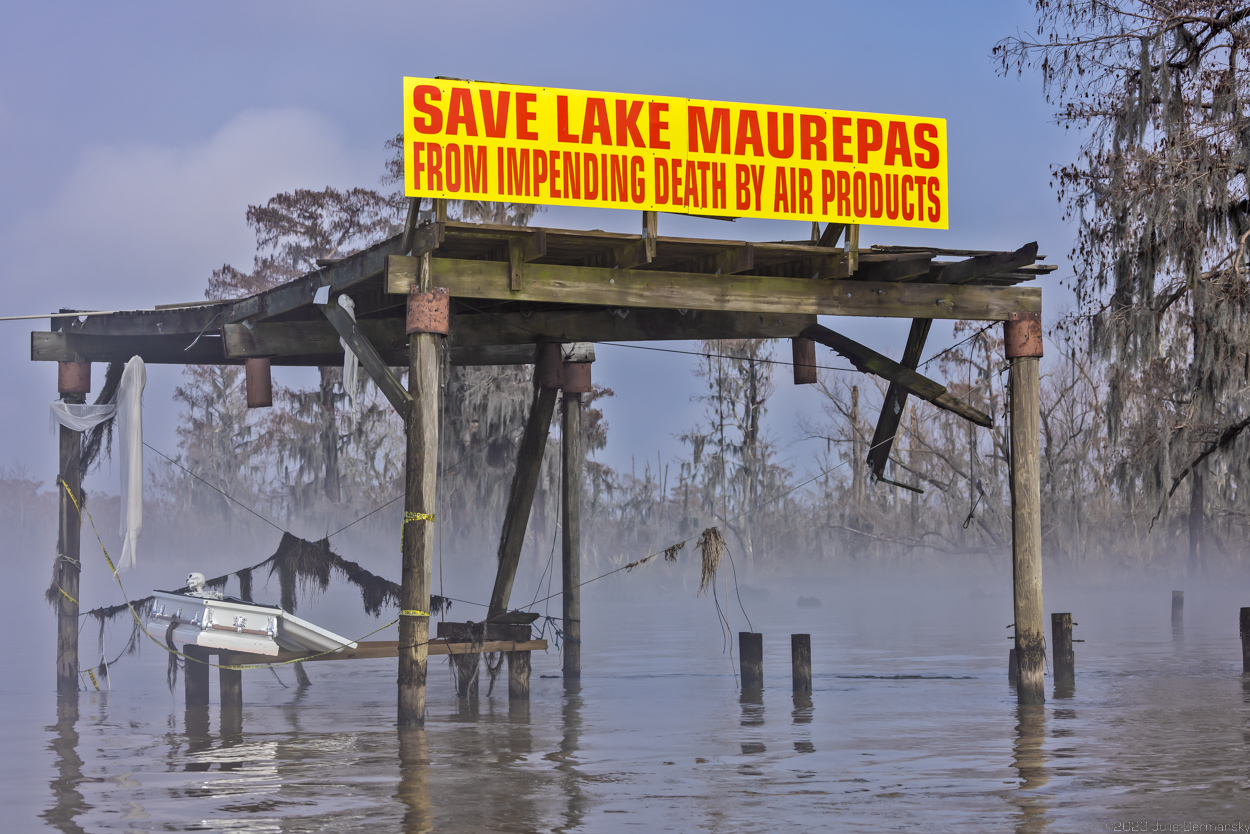Where the Tickfaw River leads into Lake Maurepas in South Louisiana, a coffin containing a plastic skeleton is fastened to pilings rising out of the water. “Save Lake Maurepas From Impending Death by Air Products,” a sign above it states. This arresting visual captures the sentiments of opponents of a plan to develop the world’s largest carbon capture and sequestration (CCS) project under the lake.
Air Products, a global hydrogen manufacturing company, is proposing to build a $4.5 billion “Clean Energy Complex” to manufacture blue hydrogen and an accompanying carbon capture and sequestration (CCS) project, that would be operational by 2026.
Fossil fuel industry giants, the Biden administration along with bipartisan support, world leaders, and major financial institutions describe projects like Air Products’ proposed development as “clean” and the technology it will utilize to capture and sequester carbon dioxide emissions as safe, proven to work, and playing a critical role in solving the climate crisis.
But opponents fighting to stop the company’s project, led by a group of not-in-my-backyard (NIMBY) locals, have had no trouble finding a wealth of information to the contrary.
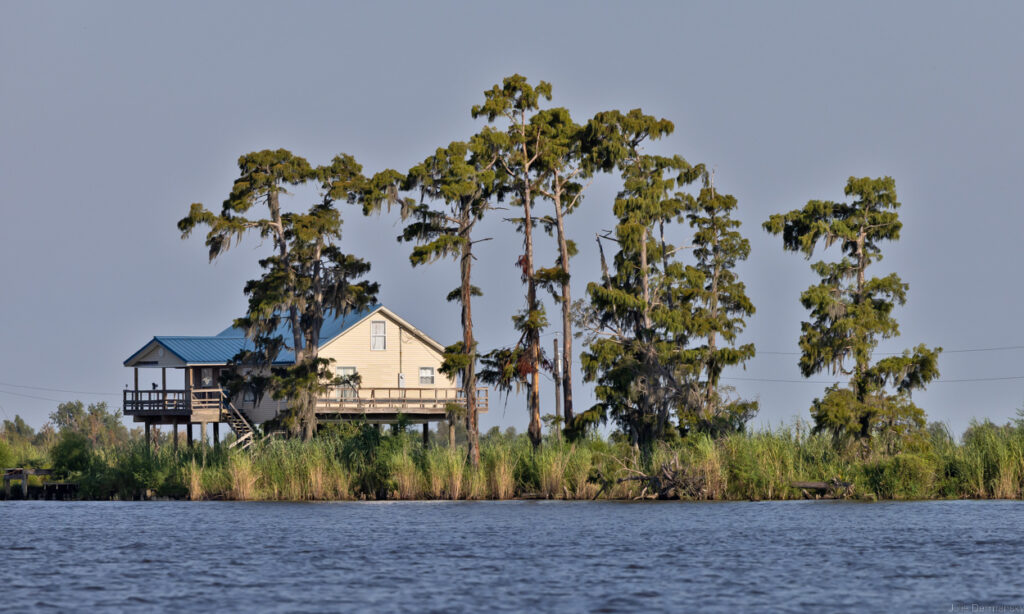

Some industry insiders are worried that the growing battle to save Lake Maurepas could turn the tide against the widely accepted but unsubstantiated premise — pushed by the fossil fuel industry and backed by billions of federal dollars as well as growing investments by the private sector — that blue hydrogen and CCS technology play an essential role in the energy transition.
Supporters of Air Products’ proposed project have readily dismissed concerns voiced by environmental advocates fighting alongside the community members to stop this project, by portraying them as unrealistic keep-it-in-the-ground types. More broadly, backers of hydrogen energy and CCS tend to see environmental advocates as obstacles to these technologies. “It’s also important to remember that CCS is controversial among some environmentalists who regard it as technology that perpetuates fossil fuel exploration and detracts from efforts to eliminate it,” a post by the global bank ING explains. Similar language is used by other the banks encouraging investments by those concerned about climate change.
But the voices of NIMBY locals could prove more difficult dismiss, since few of them identify as environmentalists and most are supportive of industry.
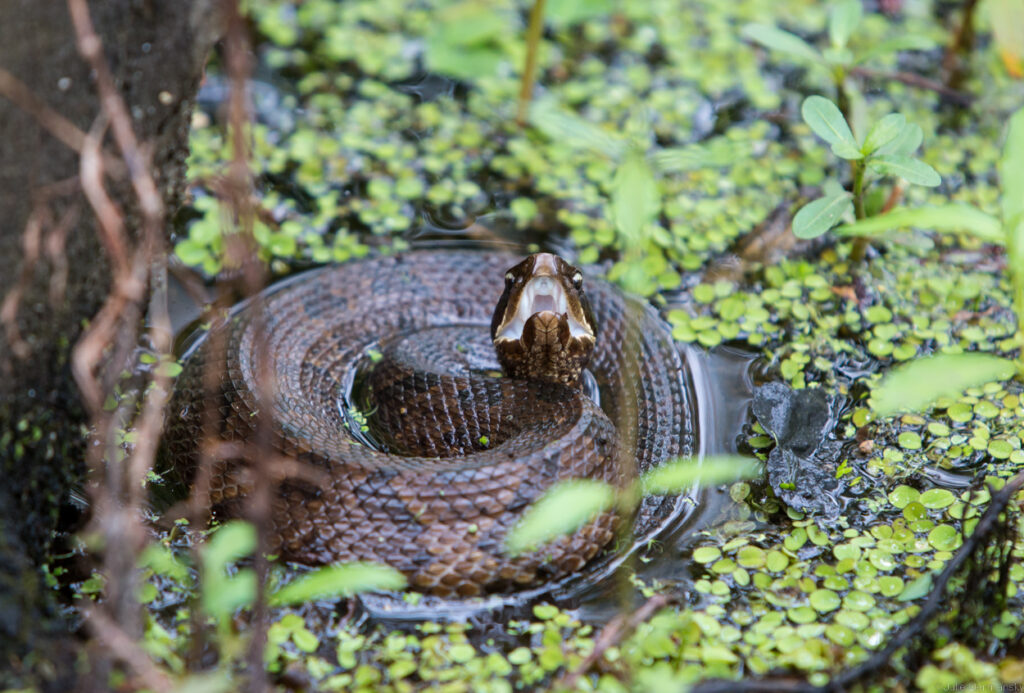
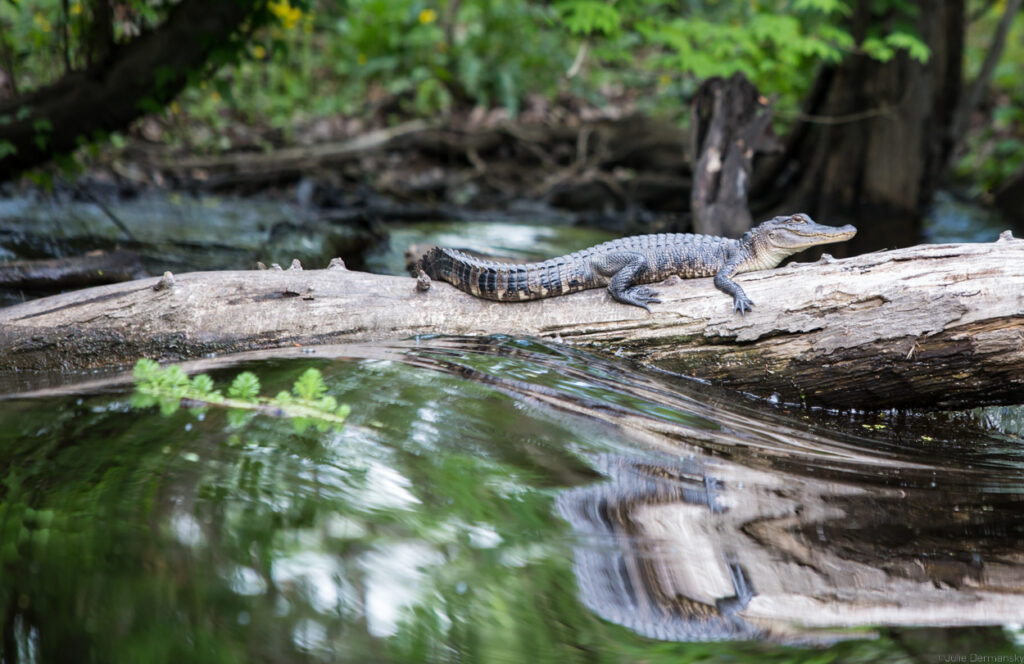
Air Products plans to build a manufacturing complex near Burnside, a small town in Ascension Parish, that will transform the methane in natural gas into ammonia and blue hydrogen while using technology to capture up to 95 percent of the CO2 emissions created in the process. The captured carbon dioxide will be liquified, then transported east via an approximately 35-mile pipeline to Air Products’ proposed CCS hub under Lake Maurepas, an ecologically sensitive habit and productive estuary abundant with wildlife. The project involves drilling multiple wellheads, running pipelines through wetlands and underneath the lake. The hub will have as many as 14 wells in which the captured CO2 will be injected under high pressure approximately a mile underground, where it will presumably be sequestered forever.
The project was announced at a joint press conference held by Louisiana’s Gov. John Bel Edwards (D) and Seifi Ghasemi, the chairman, president, and CEO of Air Products, on October 14, 2021. Both men hailed the project as positioning Louisiana to take the lead in the growing market for carbon capture and sequestration and hydrogen energy that will accelerate a transition to clean energy.
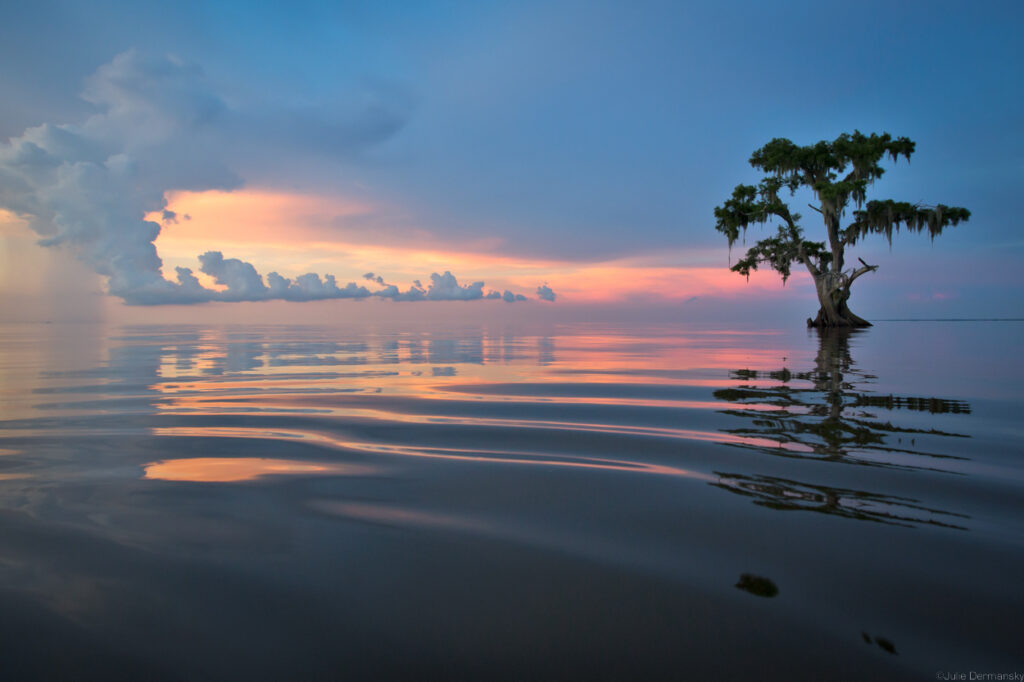
No mention was made of the company’s choice to store its captured carbon under Lake Maurepas — or that just the day before, Air Products and the state had signed an operating agreement entitling the company to utilize land beneath the lake and the surrounding wetlands, in exchange for payments to the state.
Local leaders in Livingston and Tangipahoa parishes, both conservative strongholds where support is strong for the oil and gas industry, learned by happenstance about the company’s intention to use land under Lake Maurepas six months after the operating agreement was signed. While out on the lake, a local fisherman crossed paths with someone working on the project who explained the company’s plans; the fisherman shared this information with others, including local parish leaders, igniting the pushback against the project.
Residents living near Lake Maurepas consider the prized ecosystem that offers plentiful seafood and vital storm surge protection to be an extension of their backyard and heritage. Many are concerned that such a large-scale industrial project will cause irreparable harm to the lake — and are well aware of Louisiana’s recent history of environmental devastation in other parts of the state, including BP’s Deepwater Horizon oil spill and the collapse of a salt dome in Bayou Corne.
The community’s widely shared belief that no amount of money is worth putting at risk this prized ecosystem has led to an alliance with environmental advocates who they might otherwise butt heads with.
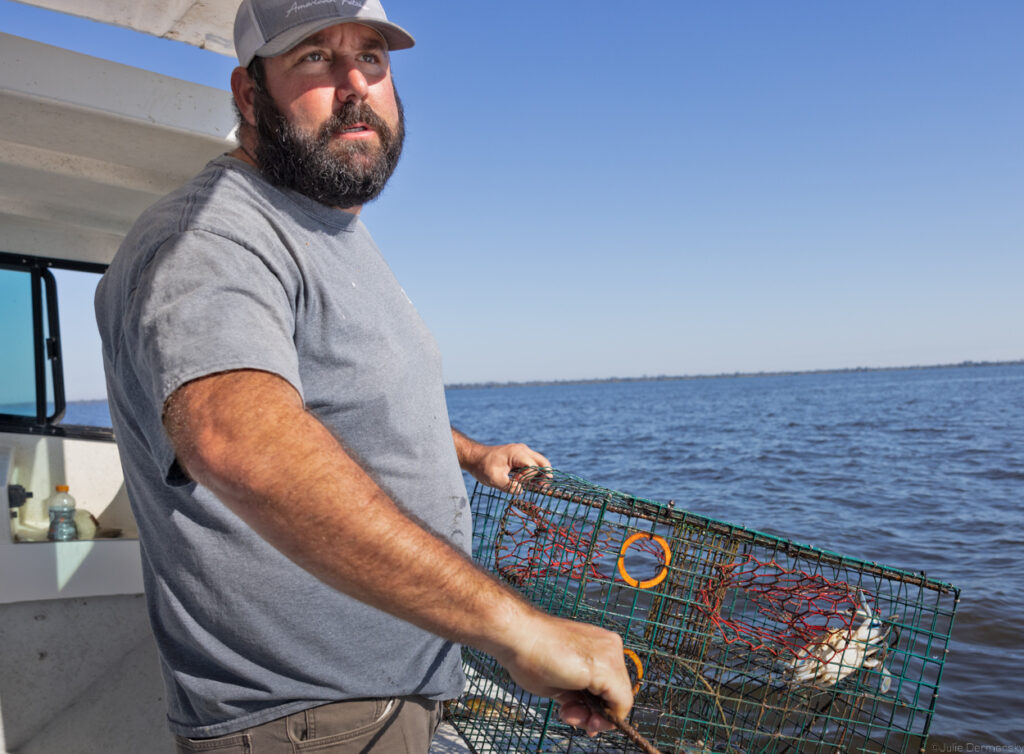
On October 14, 2022, I joined Tangipahoa Parish Council member Kim Coates and third-generation crabber Laramie Hills to see an area of Lake Maurepas where Air Products was doing preliminary work. Coates is credited as the driving force behind stopping two previous developments that similarly were described as environmentally friendly but threatened the lake’s ecosystem and the community’s way of life.
Coates told me she found it unfathomable that the Louisiana Department of Natural Resources (DNR) felt it appropriate to lease the bottom of the lake for a such a large project without reaching out to any of the parish representatives directly.
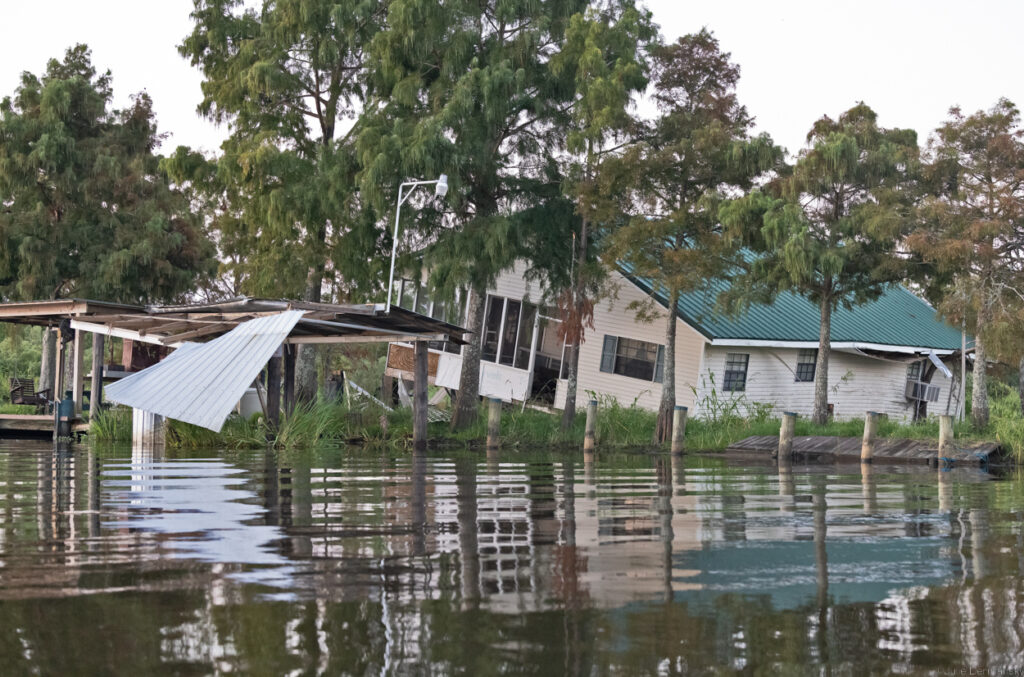
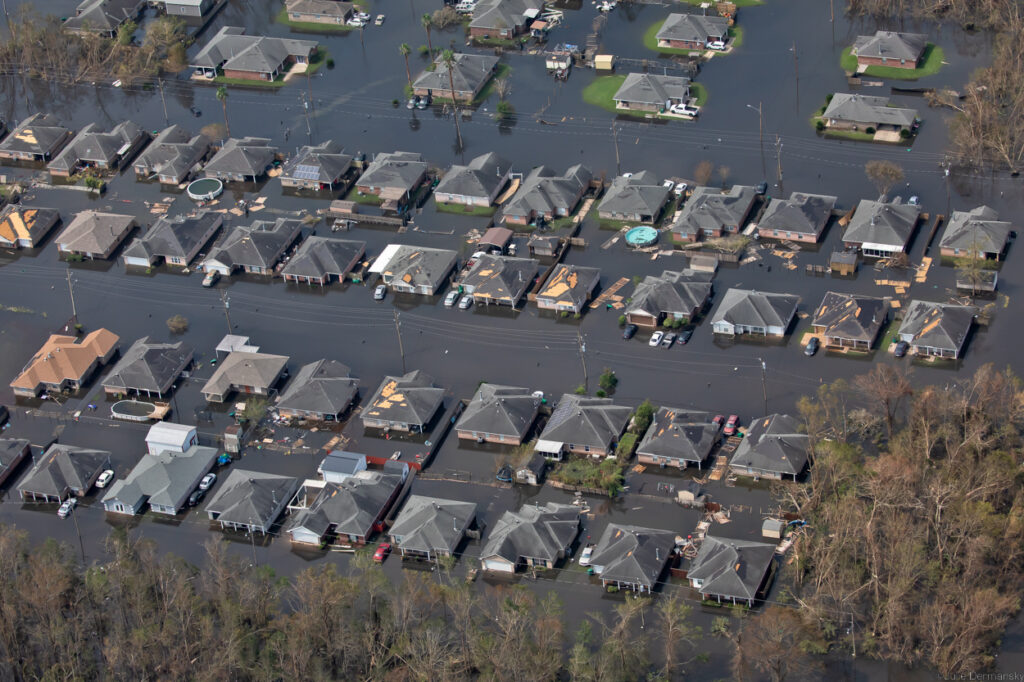
On October 4, 2021, a few weeks after Hurricane Ida hit — one of the most damaging storms to impact the state — the agency held a public hearing for the proposed operating agreement via Zoom, after posting required notices. But even if some community members had known about the hearing it would have been difficult to participate because many were still without power. Expecting public participation under those circumstance seems disingenuous to Coates, a sentiment shared by other council members and residents who see the initial permission from the state for this project as a backdoor deal.
So last October, the Livingston Parish Council decided it was necessary to take legal action to slow down Air Products’ project so they would have time to consider its potential impacts. Despite the parish’s legal counsel warning that such a measure would not withstand a legal challenge, the Parish Council voted to impose a year-long moratorium on drilling Class V injection wells — the kind used to inject “non-hazardous” materials underground — and related activities.
A few days later, Air Products sued the parish asserting the moratorium was “invalid and unenforceable,” On December 26, a federal judge issued a preliminary injunction against the moratorium. Parish officials decided to drop the moratorium after agreeing to a settlement with Air Products that was filed with the court on January 30.
If the moratorium had held, it would have delayed the company’s efforts to gather data to confirm that the geology beneath Lake Maurepas is suitable for CO2 sequestration, a necessary step before it can apply for a permit for a Class VI injection well, the kind needed for underground CO2 sequestration.
Despite the growing calls from the community for Air Products to choose an alternative location to store its captured CO2, the project’s timeline remains unchanged, Art George, Air Products’ communications director, said in an email.
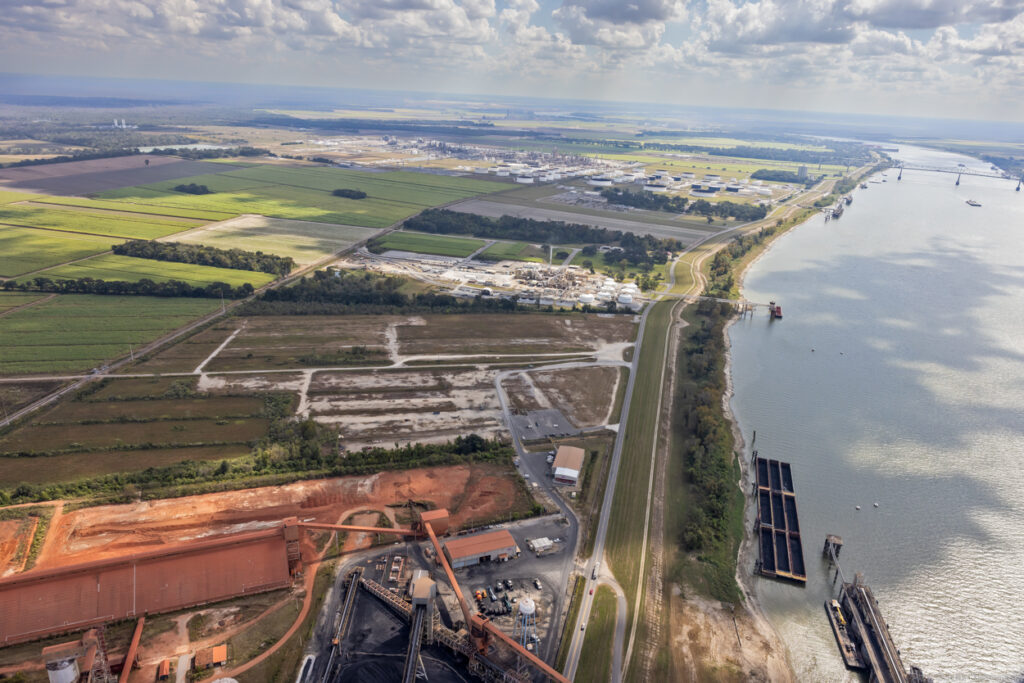
The air quality permit needed for the company’s manufacturing facility is currently under review by the Louisiana Department of Environmental Quality (LDEQ). Since the permit application is listed by LDEQ as a “minor source” of pollution and not a “major” source, the agency is not required to hold a public hearing. But several environmental advocates have asked the agency to hold a hearing, asserting that adding another industrial facility to the already large number of petrochemical plants and refineries that line the Mississippi River between Baton Rouge and New Orleans would contradict President Joe Biden’s focus on environmental justice. That stretch of the Mississippi River is often referred to as Cancer Alley due to the elevated risk of cancer from air pollution, and the chosen location for the facility is less than a mile from a majority Black school.
The public will get a chance to comment before a permit is issued Greg Langley, a spokesperson for the agency, pointed out in an email. But the agency hasn’t decided whether it will hold a public hearing.
Meanwhile, Air Products began its seismic survey last year in Tangipahoa Parish. The survey is expected to take six months, and the company is also pushing forward with plans to drill two Class V injection test wells. Once the needed tests are done, if the results indicate the geology meets the EPA’s standards, the company will seek a Class VI permit required for sequestering CO2 underground.
Currently, operators seeking a permit for Class VI injection wells in Louisiana need to apply to the EPA but that could change soon. The DNR asked for regulatory primacy over the issuance of Class VI permits in 2021, which the EPA is still considering. The state agency asserted that with an anticipated increase in the demand for Class VI permits on the horizon, it is better positioned to streamline the requests and its regulations will meet or exceed federal requirements.
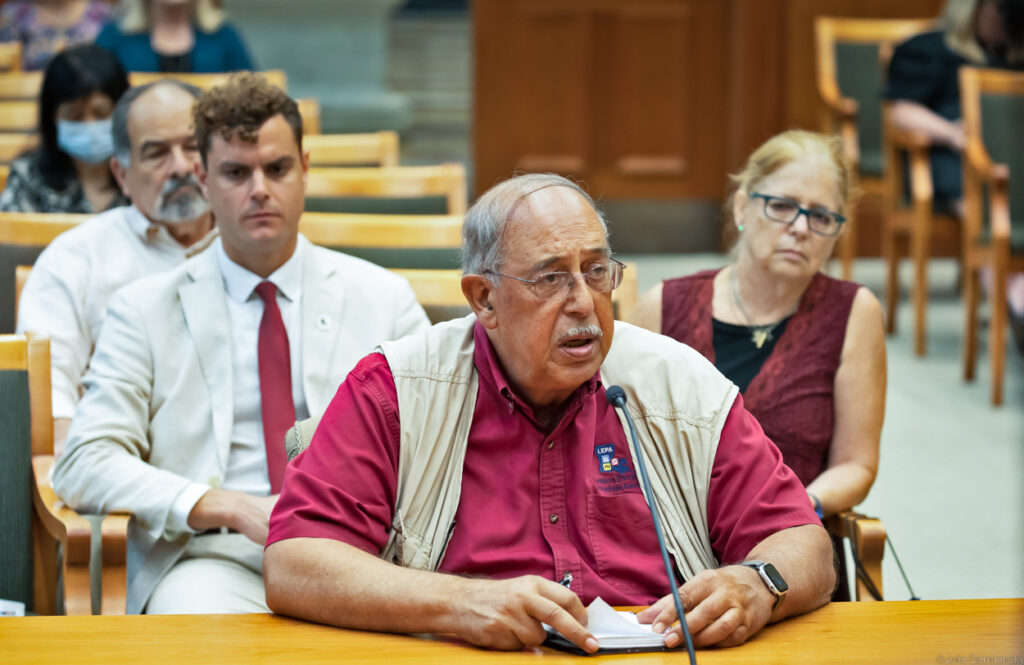
At a public hearing regarding DNR’s request in July 2021, opponents expressed concerns over CCS projects in general. They stressed the risks, including possible toxic spills, explosions at the injection well sites, damage to aquifers, and the potential for the network of pipelines used to supply the CO2 to interfere with the state’s coastal restoration projects.
Retired Lt. General Russel Honoré testified against the state’s application on behalf of the Green Army, a coalition of environmental groups and concerned citizens fighting against pollution. Honoré pointed out if CCS projects in Louisiana are developed, other states whose geography isn’t suitable for carbon sequestration will end up transporting their CO2 pollution to the state.
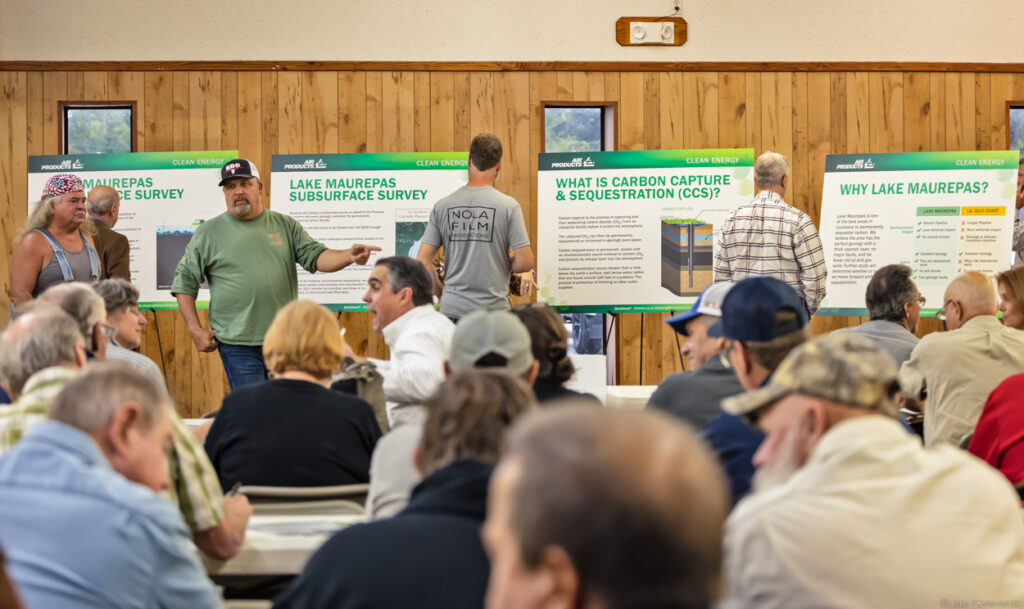
Air Products began making efforts to quell concerns after news of its CCS project under the lake spread. It seems that those efforts are backfiring. Opponents have compared the company’s public relations tactics to BP’s notable missteps following the Deepwater Horizon oil spill in 2010, recalling how BP’s CEO Tony Hayward let his frustration with locals slip when he said “There’s no one who wants this over more than I do. I’d like my life back.”
Tension was palpable at the public meetings I attended related to Air Products’ project. At the October 17, 2022, community meeting organized by Councilwoman Coates, approximately 200 people filled Ponchatoula’s Lions Club in Tangipahoa Parish where representatives from Air Products and the state fielded questions. While over all the meeting was civil, it was clear to me that battle lines were drawn.
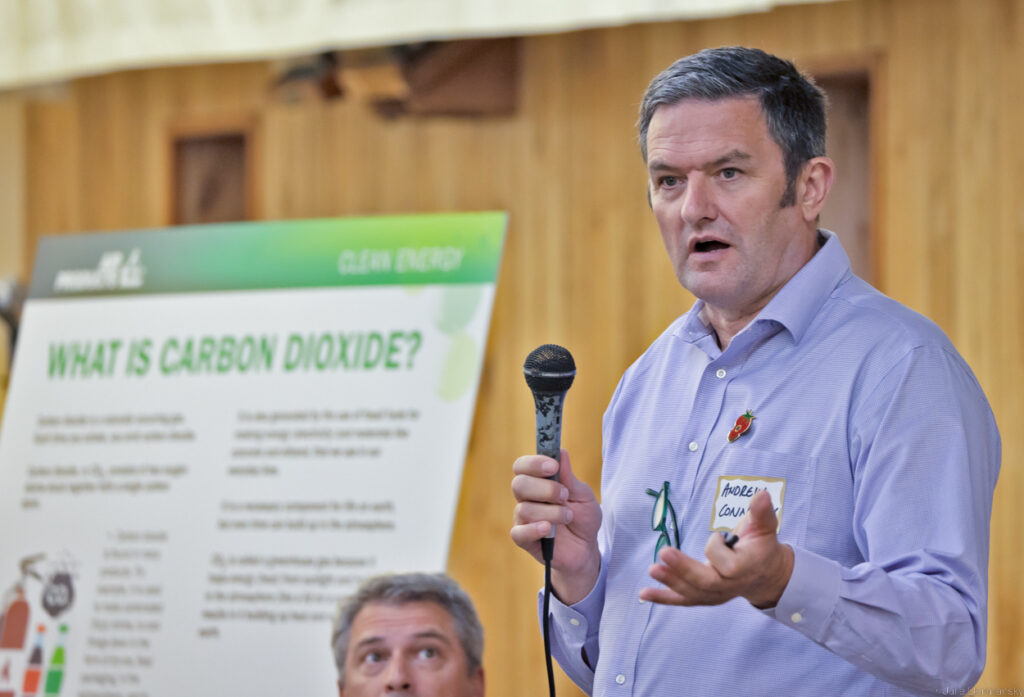
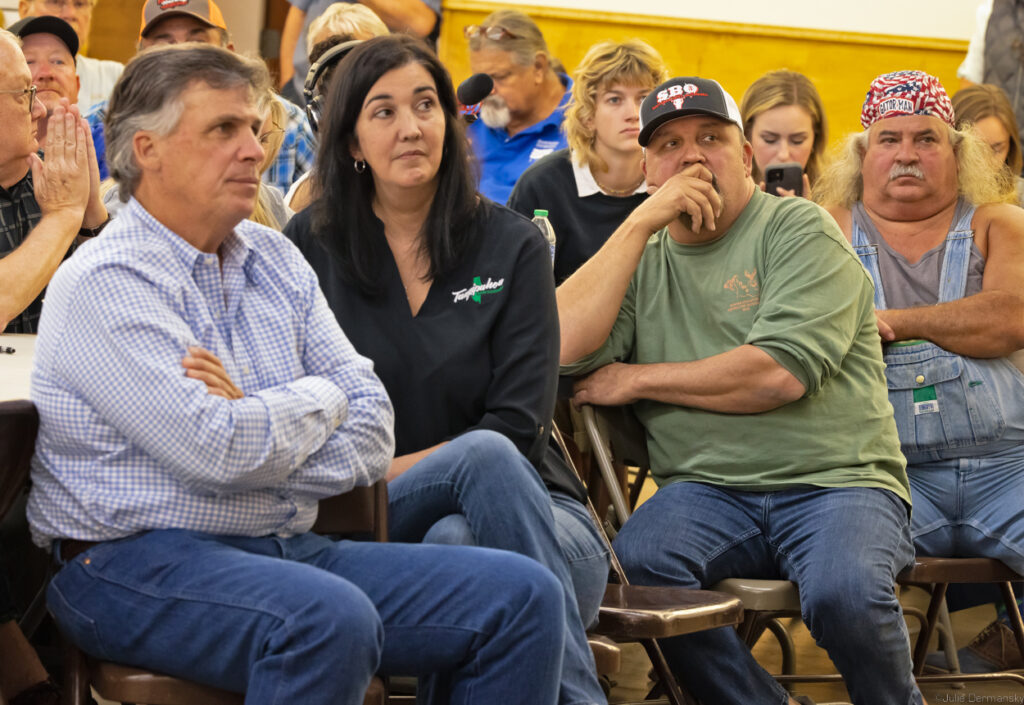
Andrew Connolly, an Air Products’ executive, asserted that neither the geologic tests nor the proposed CCS project itself would present a danger to the environment or interfere with communities’ use of the lake. He also stated that if the geography proves to be suitable for the project, its CCS component would be operated safely.
Kenny Bayhi, mayor of Killian, a city in Livingston Parish, was among those not convinced by Connolly’s assurances. His statement that he didn’t want to give Air Products a chance to turn the lake into a “hazardous waste dump” was representative of the ferocity of opposition to the project.
“You can’t remediate dead fish, or dead trees, you can’t bring back destroyed wetlands,” he said. He rejected the company’s claims that its project would be financially beneficial. “There is no amount of money that would make us understand this and accept it. We are fine the way we are.”
After the meeting, Coates told me that any company that wants to develop its project in an estuary while calling itself “green and clean” is a red flag to her. Claims like the ones Connolly made at that meeting — that this major industrial project doesn’t put the environment at risk — sets off her “greenwashing radar.” Informed by her previous standoffs with other developers, she learns everything she can to enable her to identify any risks proposed projects will create, then shares that information with others, like she started doing after hearing about Air Products’ plans last year.
“The companies put out their information, and the public only sees one side of it,” she said. “I want make sure the public has all the information on any type of project so they can see it from all angles.”
Blue Hydrogen Is Not “Clean” Hydrogen
Coates was irked by local media reports that refer to the project as “clean” without questioning what “clean” means. She thinks reporting like that makes it seem like the community is against creating clean energy jobs and helping the state bring down CO2 emissions.
It didn’t take her long to figure out that claims that this project will help lower the state’s CO2 emissions in order to achieve net-zero emissions are not accurate.
The project will add CO2 emissions not cut them, Coates pointed out, even if it is only the 5 percent of CO2 the company will miss when it captures the other 95 percent — plus you have to factor in the associated methane emissions.
Labeling blue hydrogen as clean is an example of greenwashing, she told me. She referenced a 2021 peer-reviewed study by Robert W. Howarth and Mark Z. Jacobson that found that when you factor in fugitive methane emissions from the entire natural gas lifecycle — from drilling to transportation to use — and the methane needed to power the CCS technology, hydrogen is far from the climate-friendly solution its backers purport. “Perhaps surprisingly, the greenhouse gas footprint of blue hydrogen is more than 20% greater than burning natural gas or coal for heat,” the study says.
Environmental advocates worry that the heavily subsidized push for “clean hydrogen will lock in demand for natural gas at a time when the world needs to rapidly transition away from fossil fuels — and that hydrogen is little more than the next “bridge fuel.” Natural gas was hailed as so-called bridge fuel that would enable the world to transition from the use of coal by both the Bush and Obama administrations. They welcomed the expansion of the fracking industry to increase the supply of natural gas, which led to greatly increased methane emissions. But studies by Howarth and other scientists have shown that “increasing methane emissions make it substantially more difficult” to meet the Paris Agreement’s climate targets.
Hydrogen is the most available element on the planet, but to use it as fuel it must be converted from another energy source first — be it natural gas or water and renewable energy. Regardless of what it is made from, when hydrogen fuel is used its only byproduct is water, making it emissions-free, which makes it an attractive energy source.
The colors used to describe different types of hydrogen — including brown, gray, blue, and green — refer to what process is used to produce it.
Currently, the hydrogen fuel market is small. The only color that isn’t produced using fossil fuels is green hydrogen. It makes up a tiny part of the hydrogen fuel market because it is too expensive and impractical to produce at present. Proponents of building a market for hydrogen fuel assert that while the industry works to make green hydrogen more affordable, blue hydrogen projects are needed to build a market for the fuel broadly. Opponents fear that this will end up being little more than a lifeline to the fossil fuels industry.
The federal government is throwing its weight behind expanding the market for hydrogen fuel and carbon capture technology, with tens of billions of dollars of support for each in 2021’s Bipartisan Infrastructure Law and new and expanded tax credits in last year’s Inflation Reduction Act. The stakes to capitalize on the bonanza of capitol are high: Louisiana is in line to get a major federal grant to help develop a regional hydrogen hub, and because the state already has a large carbon-polluting industrial sector with existing infrastructure to supply the natural gas needed to produce blue hydrogen — and geology that is viewed as suitable for sequestration projects — other fossil fuel industry giants are considering similar projects in the state.
The gamble that hydrogen fuel can replace fossil fuels is illustrated in a 2021 video about “clean hydrogen” from the U.S. Department of Energy. After describing green hydrogen (without labeling it as such) and saying that clean hydrogen has zero carbon emissions, U.S. Secretary of Energy Jennifer Granholm says that “hydrogen can also be carbon neutral when it’s produced from natural gas resources that use carbon capture and storage technologies and address methane leaks, avoiding harmful greenhouse gas emissions in the process.”
This rosy picture glosses over the fact that no facility has been able to capture 100 percent of carbon emissions through CCS — or even come close to the 95 percent Air Products is aiming for — meaning that zero carbon emission hydrogen is currently impossible. It also fails to note that although the EPA recently released a proposal to curb methane emissions, setting new standard for methane has proven to be a long drawn out process.
Justin Mikulka, a research fellow for New Consensus and frequent DeSmog contributor, pointed out that due to a lack of success to capture high rates of carbon, companies utilizing CCS “always talk about how much CO2 they capture, not the actual rate. It is a scam,” he told me in an email.
When asked what happens if Air Products’ planned plant fails to capture the 95 percent of emissions the company projects, Art George dodged the question. “The Louisiana Clean Energy Complex, when fully operational, will capture more than 5 million tons of carbon each year, based on our engineering and experience,” he said.
“Aspirational is probably a good way to describe it,” said DNR spokesperson Patrick Courreges when I asked him how he defines “clean” hydrogen and how the state distinguishes it from not-so-clean hydrogen.
“Right now, neither the production NOR consumer infrastructure are in place,” he said via email. “Things like the federal hydrogen hub funding are intended to accelerate that build out, but the potential is certainly there to create and harness hydrogen.”
But Howarth and Jacobson’s 2021 study, among others, shows that acting on that potential and embracing hydrogen is just as dangerous a path for the climate as replacing coal with natural gas was.
St. John the Baptist Parish Council Joins the Fight
A few days after the meeting in Ponchatoula, Air Products representatives addressed the concerns of St. John the Baptist Parish Councilmembers, another of the parishes that share the lake’s shore.
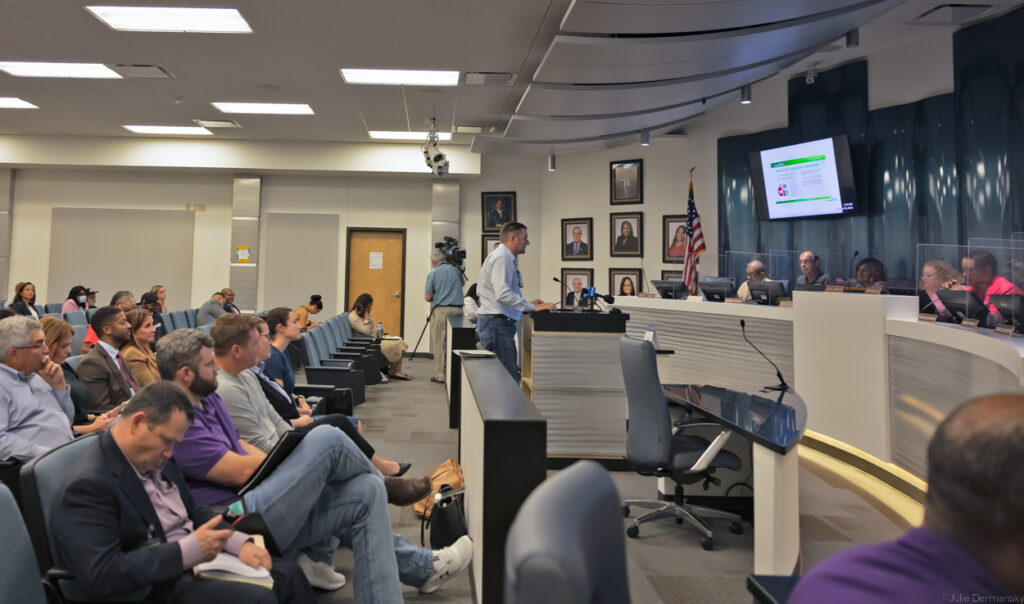
Connolly reiterated the company’s commitment “to being a safe, transparent, and responsible community partner “ and that carbon dioxide sequestration is a well-proven technology,” before stressing the company already received approval from the state — a fact that continues to be sore spot with the local officials.
He went on to compare the dangers of the CO2 Air Products will capture to the CO2 in soft drinks. And the company’s pipeline assurance manager, Clay Spencer, tried to dismiss concerns over the risks of CO2 escaping from the pipelines built for the project, saying, “I will put my name on the line and guarantee the safety of that pipeline because I trust my team and my abilities.”
“We all know, okay, none of us can guarantee anything,” Councilman At-Large Division A Lennix Madere Jr. said, chiding Spencer. “And so we stop using the word ‘guaranteed’ because you can’t guarantee anything.”
Madere also objected to the notion that the CO2 would stay underground forever, pointing out that most carbon captured by CCS has in fact been injected underground in order to extract more oil from old wells.
Councilwoman Tyra Duhe-Griffin pointed out that they all known CO2 can be found in beverages, but asked Connolly if he was aware CO2 can be deadly.
“Yes, yes,” Connolly replied, “at high levels.”
“And at low levels as well — as low as 30 percent, it can kill you instantly,” Duhe-Griffin added.
“Yes,” Connolly conceded.
Griffin told him she found it disturbing that he is telling residents that the CO2 that will be injected is safe by comparing what is in beverages to what the company will inject under the lake.
Councilmembers also dismissed the financial benefits Connolly suggested the project will have, saying they only see a benefit for the company, not their community. They told Connolly the company wasn’t welcome and suggested Air Products should choose a more suitable location, like the Gulf of Mexico.
Continued public concern over the project was also evident at a December 20 DNR public hearing for one of the Class V injection well permits Air Products needs. Fifty people showed up despite the hearing being a few days before Christmas.
“The project is in accordance with the state and federal climate objectives, which seek to drastically reduce emissions to help protect the environment and people, especially those who live near heavy industry,” Connolly said at the start of the hearing, also reiterating the company’s policy of being transparent. After he finished, 20 people spoke, largely against the permit application.
“The lack of transparency by Air Products is just unbelievable,” said Kinion Bankston, owner of Southern Boyz Outdoors. “That a Fortune 500 company can come into a community and just steamroll us and run over the local government is really heart breaking.”
He expressed outrage at being met by a man in an unmarked boat, wearing full tactical gear and brandishing an “AK” when he and others attended a December 5 demonstration held by Air Products so they could view an example of one of the 17,000 charges it is using to complete its seismic survey.
The armed security guard turned out to be an off-duty sheriff paid $85 an hour to provide safety services for the company, Kinion pointed out. While he understands the company is required to have security where it is doing the seismic testing, he questioned the need for those who came to watch a blast go off to be met by a guard with a long gun.
“They’re taking those guns and pointing them at people who are worried about protecting the water and the ecosystem in their parish,” Honoré said while commenting against the permit on behalf of the Green Army. “That’s a crying damn shame to have that happen.”
Livingston Parish business owner John Albanese lamented that the state agreed to protect the area’s drinking water and environment around the lake years back, which gave him and others a false sense of security that the area was safe from development.
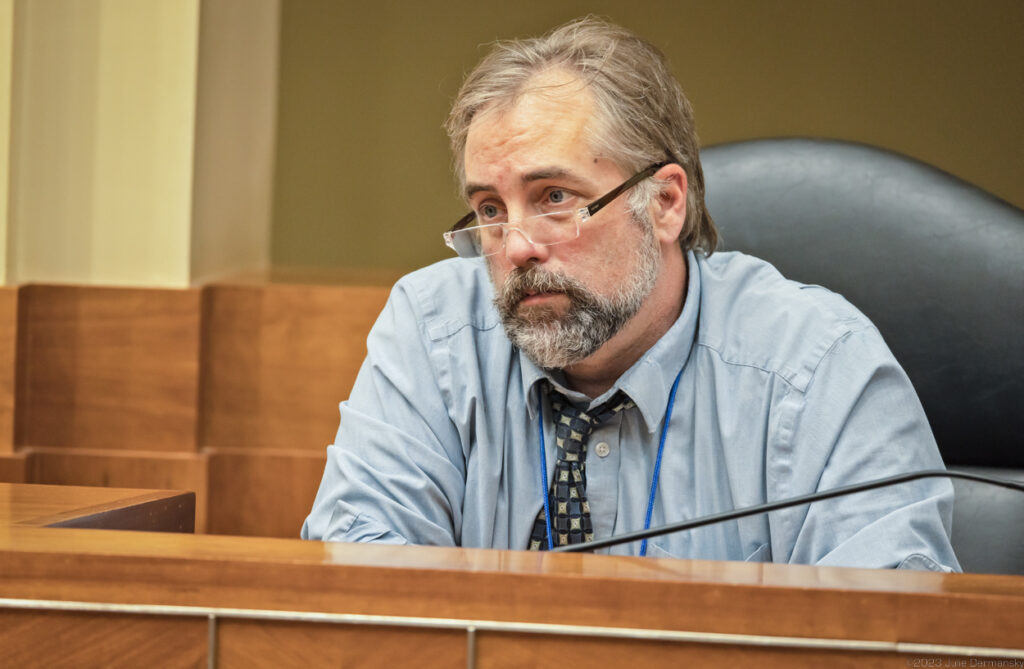
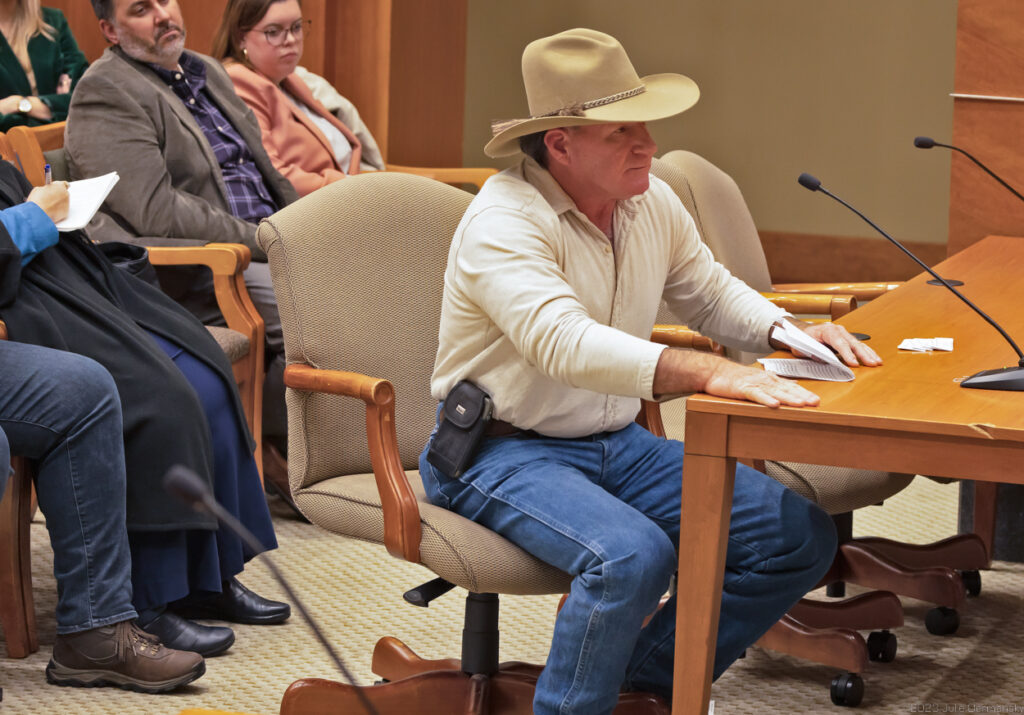
He asked the agency to halt the project before it is too late. He also made it known that he has been in the industry for 43 years and, like others in the industry, sees the company’s choice to set up shop under that lake as regrettable. “This is making it hard for the other companies to do business,” he said, adding that “it’s bringing scrutiny on the industry” that it doesn’t want.
Air Products’ proposed project is catching attention outside of the region, as well. Yvette Arellano and Shiv Srivastava, Gulf Coast organizers with Fenceline Watch, a nonprofit environmental advocacy organization that monitors fossil fuel industry sites along the Houston shipping channel, are keeping an eye on the situation in Louisiana because a growing number of similar projects have been proposed in Texas, too.
They find it alarming that the expansion of both blue and green hydrogen is being hailed as a climate solution. On a recent call with me, they pointed out that Exxon is planning its own CCS project along the Houston Shipping Channel and that in December, Air Products announced it plans to build the largest green hydrogen project to date in Texas. While many currently consider green hydrogen in a positive light, they were quick to point out such projects require vast quantities of water to operate; with persistent drought already straining the public’s access to water in Texas, they are concerned Air Products’ proposed project in Texas will make water more scarce than ever for some communities.
Arellano and Srivastava, see bipartisan support for such projects as a warning sign that this latest greenwashing campaign by the fossil fuel industry is working. Along with other environmental advocacy groups, they assert that these projects will increase our reliance on fossils fuels and set back those working to find real climate solutions.
Arellano was also alarmed to find expanding the hydrogen market being framed as a climate solution at COP27 in Egypt last year, and didn’t find it surprising to learn that Air Products played a major role in a “Hydrogen Transition Summit” that took place at the same time, nearby.
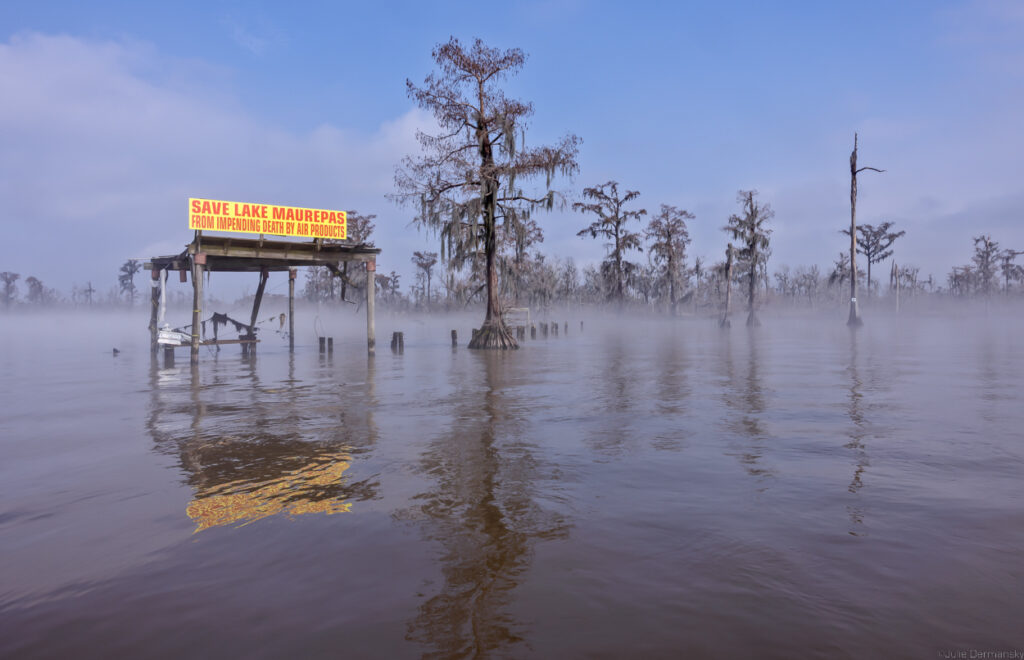
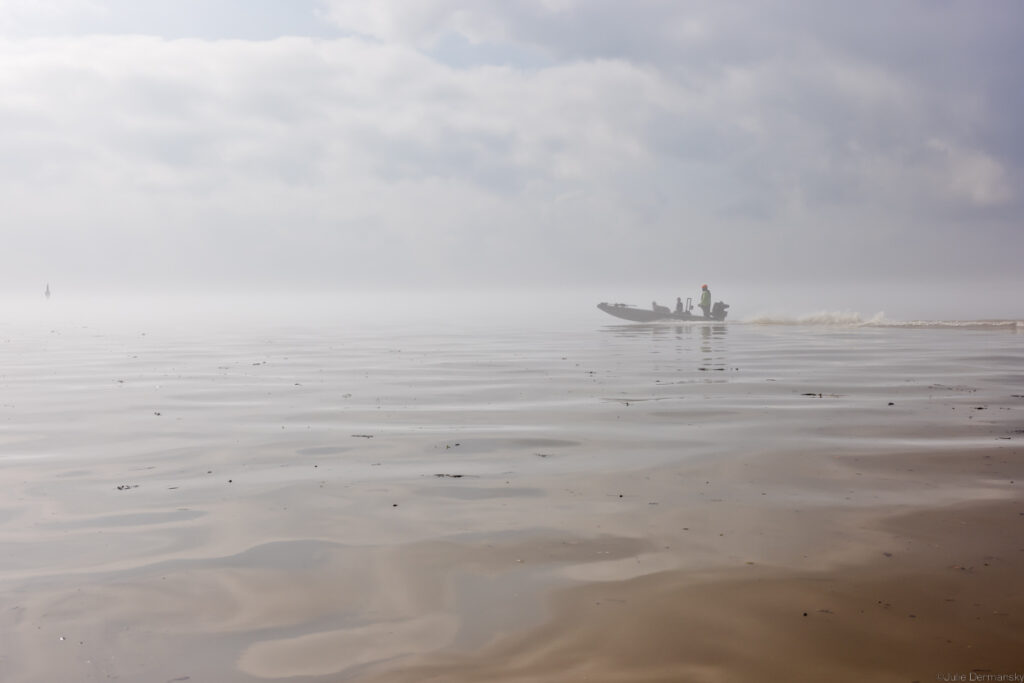
When Marty Starkey, alderman for the town of Springfield in Livingston Parish, took me on his boat to see the coffin under the “Save Lake Maurepas” protest sign in early February, it was the kind of foggy day that opponents of the project worry could cause boaters to hit the injection well sites if they are realized. Starkey informed me that community members like him are already digging for a long battle.
Like the other founding members of Lake Maurepas Preservation Society, a group created to stop Air Products’ project, he isn’t against industry; his objective is to protect the lake. But that isn’t stopping them from welcoming support from environmental advocates that have already been working to oppose the project, including CIEL, Healthy Gulf, and the Green Army.
“There are some things money can’t buy,” he told me. “It’s an all hands on deck effort.”
Subscribe to our newsletter
Stay up to date with DeSmog news and alerts


